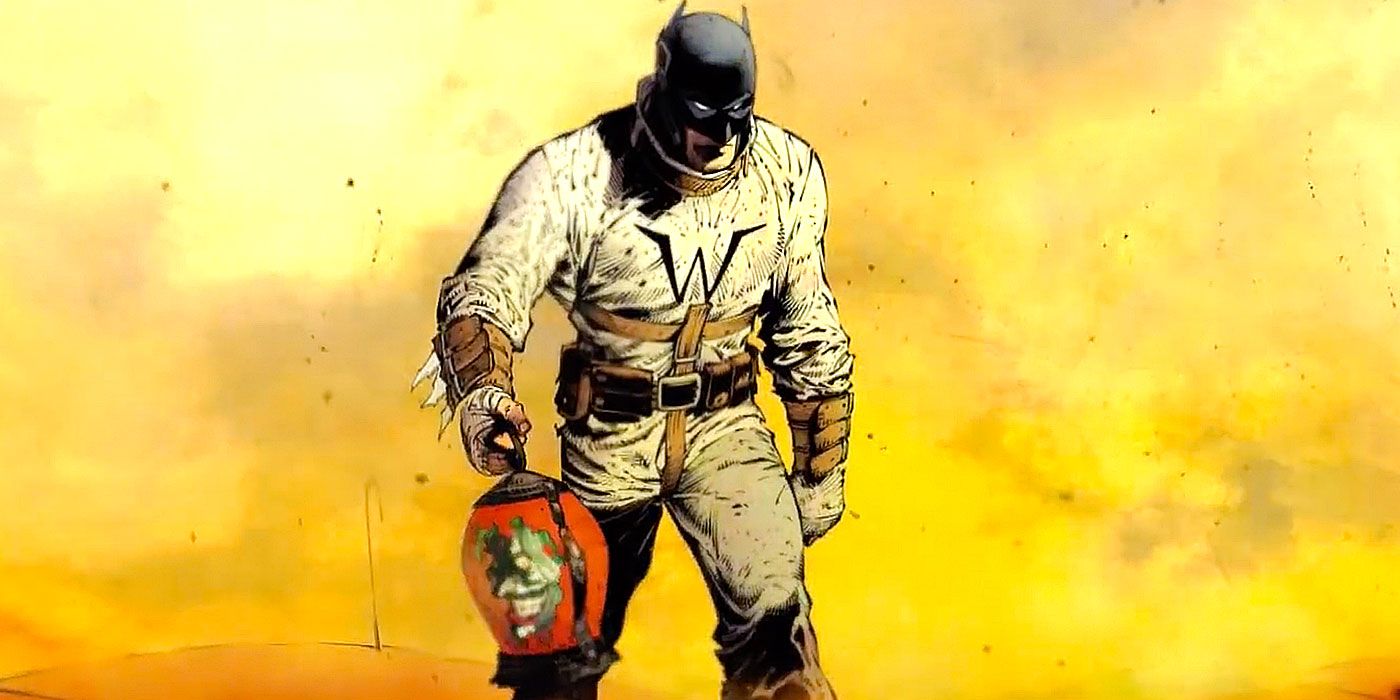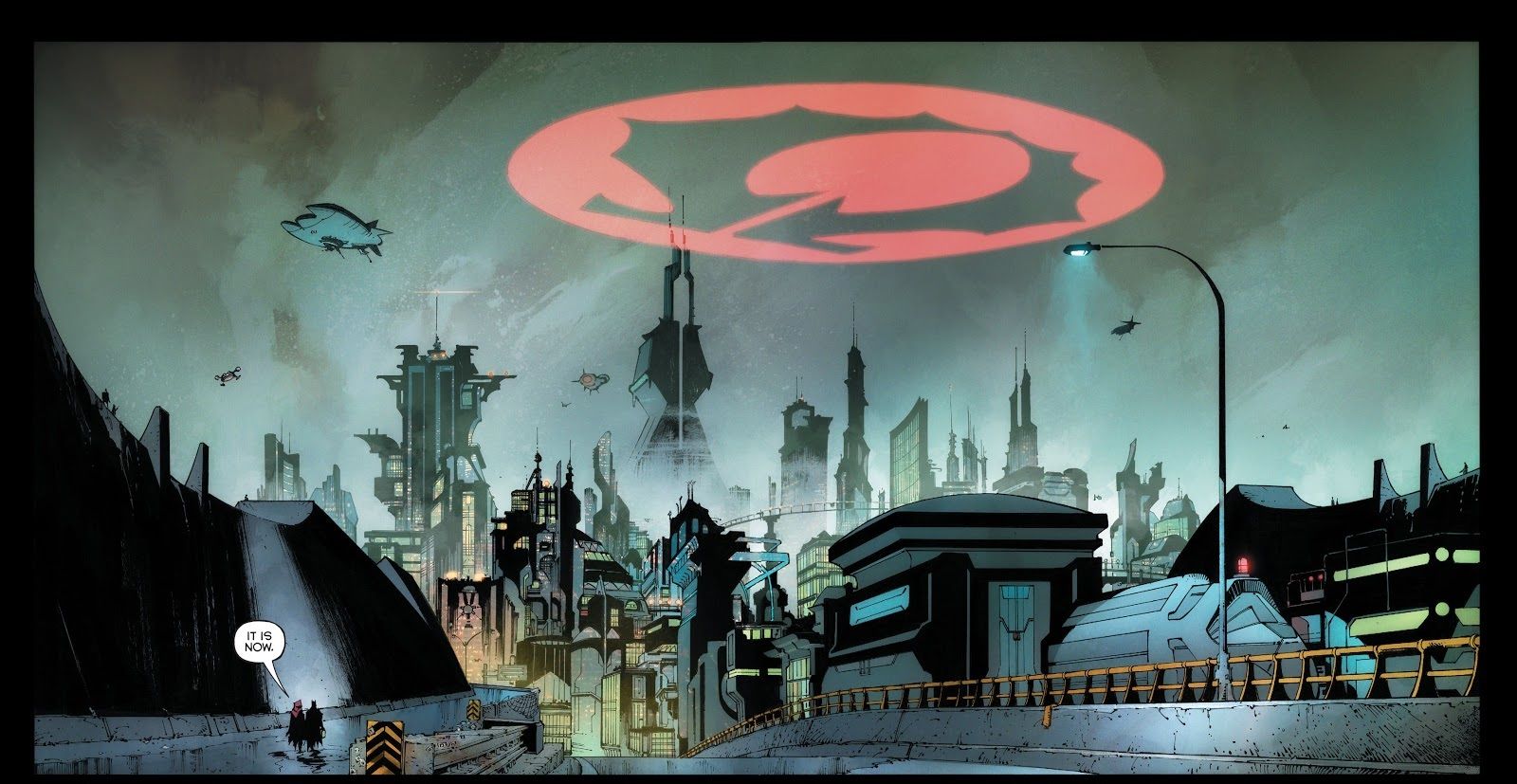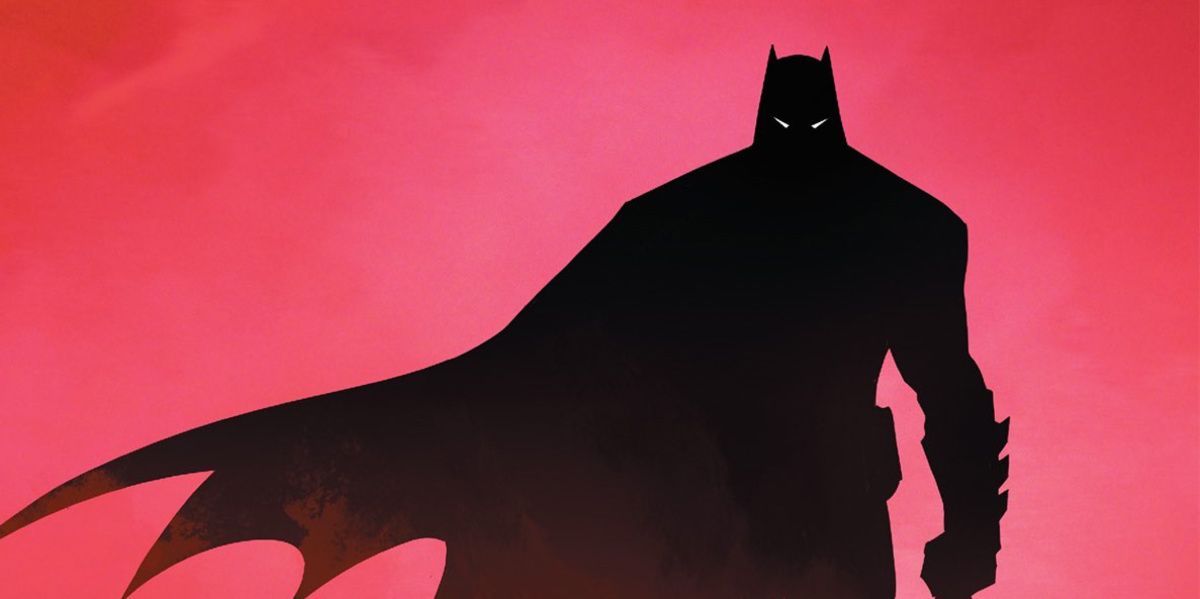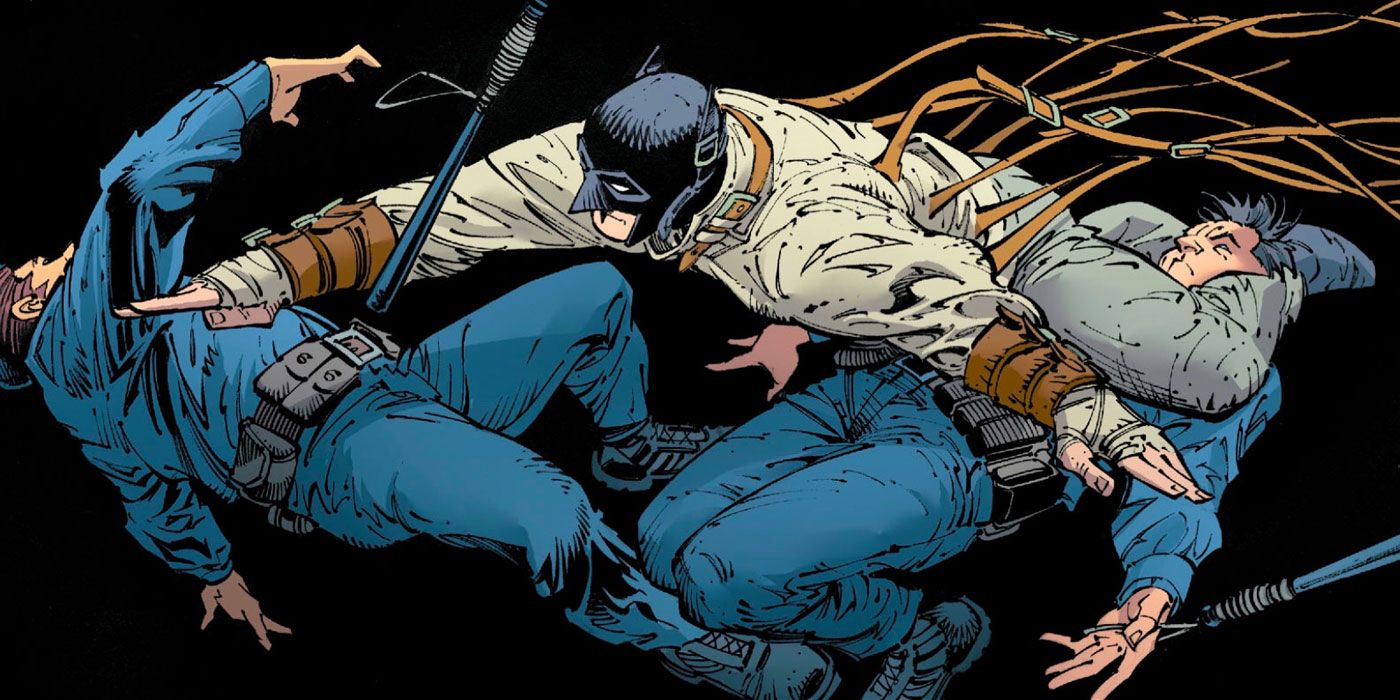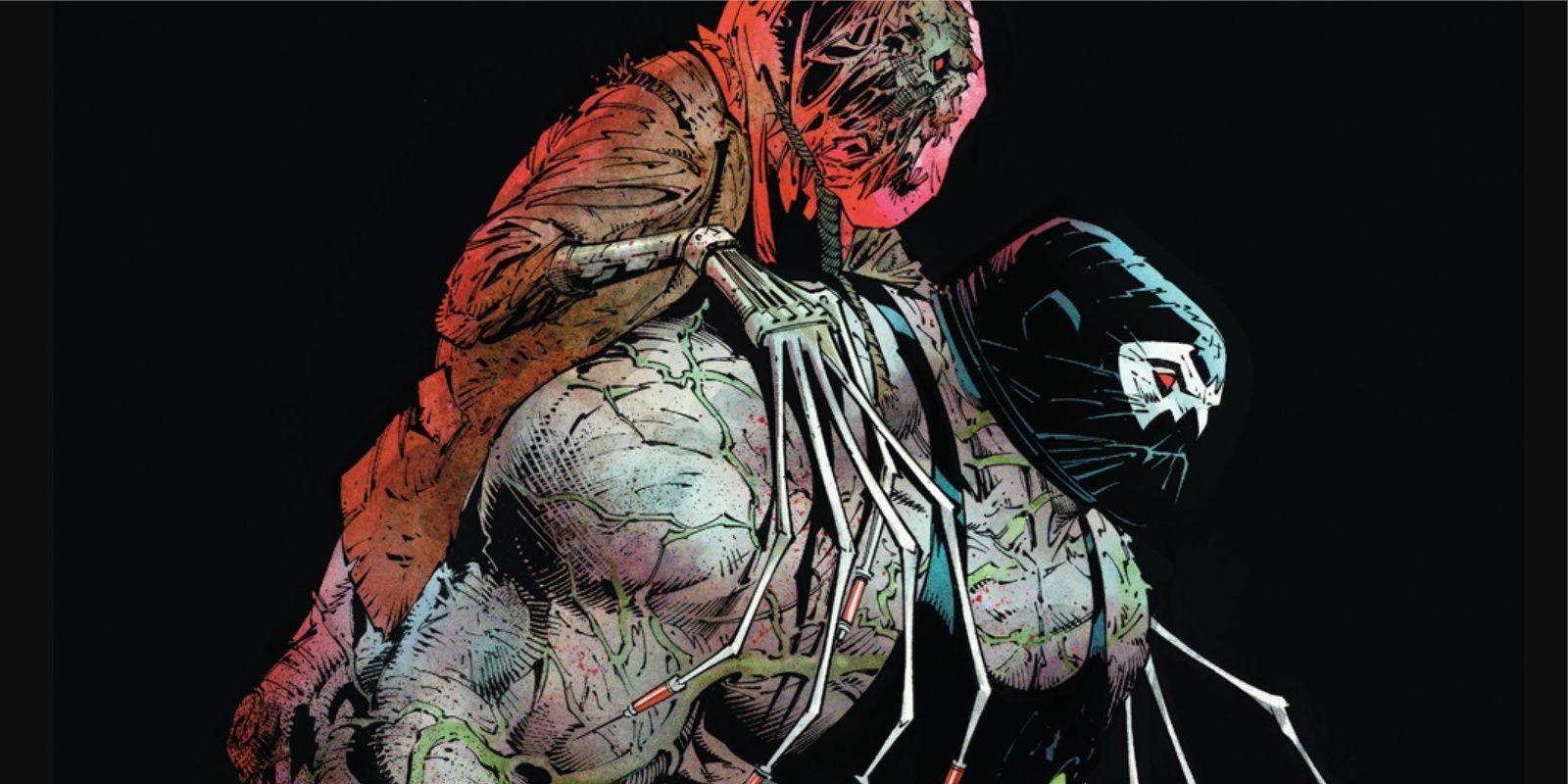WARNING: The following article contains spoilers for Batman: Last Knight on Earth #1 and #2 by Scott Snyder, Greg Capullo, Jonathon Glapion, FCO Plascencia and Tom Napolitano, on sale.
The "dark future" story is a comic book staple, so much so that it's almost the entirety of the X-Men's canon at this point. And why not? There are only so many criminal masterminds you can imprison, and only so many world-ending plans you can thwart before readers expect bigger and bolder obstacles for their favorite superheroes. And there's no better obstacle than complete and overwhelming failure.
The billion-dollar success of Avengers: Infinity War is owed to the shock value of the Avengers' similar failure. The wider, superhero movie-going public was well-accustomed to sitting comfortably back knowing that the day would eventually be saved, film after film. And, yes, by the climax of Endgame, all was right with the universe, but the hurdle Thanos' victory placed in front of the surviving heroes could only be surmounted by nothing less than the invention of time travel. When times get tough -- real tough -- characters, and their creators, get more creative, and that's the real pleasure of a dark future story.
DC's Batman: Last Knight on Earth miniseries is a perfect version of this idea. Its titular hero is, of course, no stranger to being catapulted through time and space; whether he's treading the cobblestones of the Victorian era or walking the face of a distant planet. Most major superheroes and similar comic book characters have a few dark futures -- and alternate dark pasts -- under their belts, but Last Knight on Earth serves to emphatically remind us that Batman marries himself particularly well to the concept due to his unique genetic makeups.
THERE'S NO PLACE LIKE HOME
From Metropolis to Themyscira, Asgard aor Hell's Kitchen, most superheroes' names are synonymous with specific locations that they either originate from or stand guard over (or both). But none, not even Superman, have the relationship that Batman does to his home: Gotham City.
Much like the noir detectives of '40s cinema -- a period writer Scott Snyder is especially partial to -- Gotham itself is a central character in the Dark Knight's mythology. You can see it in the way that the Batsuit's colors, whether the bright, four-color hues of his first few decades or the muted tones of the modern age, always blend into the gothic architecture that sets the city apart from others in the DC Universe.
You can also hear it in Batman's own words -- or rather, Snyder's words, as is the opening narration of his and Capullo's "The Court of Owls," which personify Gotham through each of Batman's Rogues Gallery before proclaiming, between punches, that, "[...] Gotham's criminals whether old or new will never defile this city. [...] Gotham is 'Batman.' Gotham is 'Batman's City.' Gotham is 'the Bat.'"
Untethering a character from a physical location they're so intimately dependent on makes for a far more interesting futuristic tale, especially one in which the "defilement" Batman fears has already happened. We're always intrigued by what the Caped Crusdader will do without his usual gargoyles to hunch over or shadowy alleyways to hide in.
WORLD'S GREATEST DOOMSDAY PREPPER
Among DC's godlike canon of characters, Batman has always stood out as one of the few, prominent non-supers among superheroes. (If you had unlimited resources and enough untreated emotional baggage from your childhood, you too could take a few martial arts lessons, create an animal-themed arsenal and patrol your hometown's streets.)
But in spite of the long-running joke, Batman's "superpower" isn't money. It's actually far less flashy, and consequently far less cinematic. If Batman has any superpower, it's his knack for always having a contingency in place. Even in the post-apocalyptic rubble of Last Knight on Earth, Bruce Wayne has a cryo-machine stashed away to ensure that a Batman is always around to protect Gotham.
Without any latent superpowers to fall back on, stripping the gadget and cash-laden hero down to his core and watching him rebuild with only his wits to guide him will always be endlessly fascinating.
DIE ANOTHER DAY
In Last Knight on Earth's first issue, we watch Bruce -- a Bruce -- break his way out of both a mental prison and a hologram-layered Arkham Asylum, dressed in nothing but a straight-jacketed version of the Batsuit, with no utility belt, no Batmobile, No backup, and no clue what world he was stepping into.
As much as Batman is an archetypal dark avenger who's tortured and tragic like a sympathetic Dracula, Batman is, at his core, something more positive, a survivor. He survived the murder of his parents -- the most unthinkable trauma any child could go through -- and his will to keep surviving has since grown inhumanly strong, strong enough take the harshest dystopia head-on. Even his supposed death, in Grant Morrison's Batman: R.I.P, wasn't an end for Bruce, but a kaleidoscopic journey into his own psyche.
No surprise then, that Morrison had some influence on Last Knight on Earth's creation, which is itself more than your average post-apocalyptic tale of survival, but a labyrinthine odyssey through Batman's own history. When tumbling down this rabbit hole, even the smallest pieces of his mythos become heavily weighted symbols: Crime Alley, Joe Chill, a penny and a dinosaur toy Bruce finds wedged into the wall of his padded cell -- totems he uses to keep his fractured sense of self from crumbling.
SURVIVAL OF THE DARKEST
At the center of Last Knight on Earth is the question of whether or not Batman should even exist. And, really, the answer should always be... no.
Batman, as the prototype vigilante, is a character born to correct a broken society, one in which even a late-night stroll home with your young son can result in an unsolvable double homicide, no matter how deep your pockets are. Extreme conditions breed an extreme kind of hero; the Dark Knight is the product of a system of law enforcement, and a city, on the brink of collapse.
This is also, and finally, another built-in aspect that makes Batman the perfect insert into an "end times" environment -- blowing up the localized stakes of a crime-torn metropolis into the global stakes of a war-torn world, or even universe; its his usual sandbox, just a whole lot bigger.
The darker the future, the darker the Knight to fix it.

